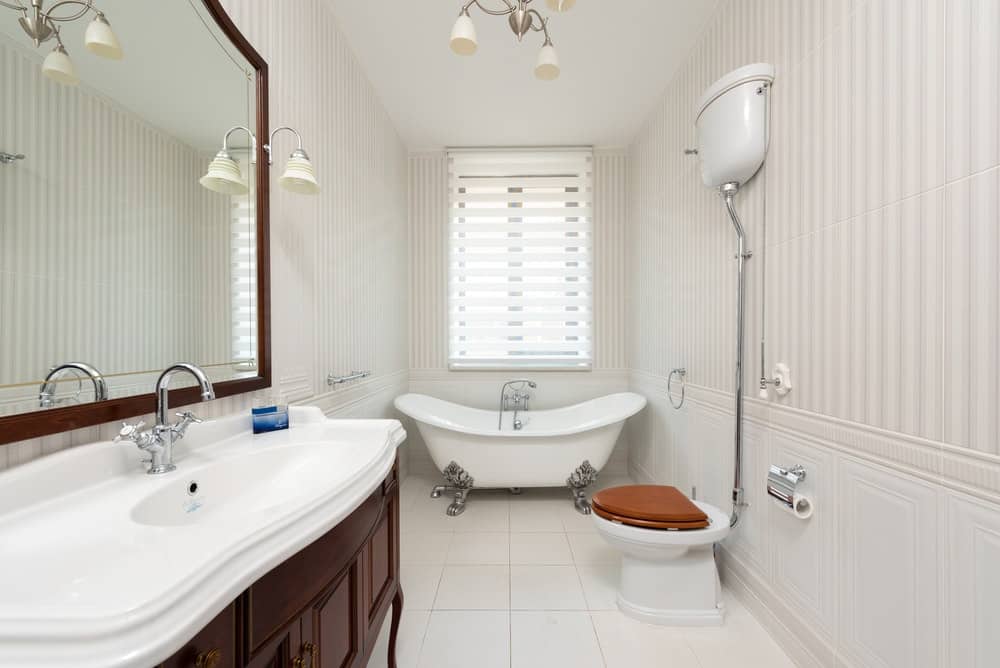Featured
Bathroom condensation is the last thing you want to deal with during winter. Warm air and moisture are released into the air after a shower or a warm bath, resulting in increased condensation. It is unfortunate that many households have to go through this unpleasant experience.
In this post, we have compiled a list of some of the methods that can be used to manage the unwanted mist and keep the space less prone to mould growth.
Set Up an Exhaust Fan
Although opening a window can easily remove bathroom condensation, it is ineffective because it allows cold air to enter and warm air to escape. What can be done is to install an exhaust fan that will pull in the extra moisture while keeping the cold air out.
Even though it is more common in the winter, installing an exhaust fan protects your bathroom for all seasons. To ensure that most of the moisture has been drained, leave the fan running with the bathroom door closed for at least 15 minutes after your shower.
Always choose a quality exhaust fan from a leading bathroom brand like Bathshack.com to ensure you get the best value for as long as possible. Also, remember to clean the exhaust fan regularly to remove dirt and dust so that it can remove steam effectively.

Regularly Wipe the Surface
This might seem tedious to do, but wipe clean the surface after each bath or shower. This will save you a lot of time and trouble in the long run. Grab a towel and dry any surfaces that may become damp or have a noticeable condensation film. All the windows, mirrors, and wall panels in the room usually have regular moisture build-up, so prioritise these areas. It is not required to completely dry everything; simply removing any moisture that has gathered would suffice.
Another effective way of removing these build-ups is to use a squeegee, which is a long rubber blade with a handle that is pulled across the surface. Squeegees are less expensive and you can always hang them in the bathroom once you have used them.
Have a Cooler Shower
Showering is without a doubt one of the quickest means of producing moisture. For those who enjoy hot showers, the heated water from your water heater creates steam, which then turns into vapour. When the vapour comes into touch with a cooler wall, droplets form.
There is no other way to cope with this than to take a shorter and lower water temperature shower. Not only will this minimise the heat and humidity in your bathroom, but it will also save you money on your bills.
Finally, remember to keep the bathroom door closed when taking a shower. This is to prevent the risk of condensation from forming on other cold surfaces around the house.

Install Demistable Mirrors
Mirrors are an obvious sign of bathroom condensation build-up. You know the room is wet when you step out of the shower and observe your mirror has steamed up. In addition to cleaning with a squeegee, purchase demistable mirrors to save the hassle.
Demistable mirrors are simple to install and often come with heating pads that keep the mirror’s surface warm. Demistable mirrors in general are more expensive than your ordinary mirror. However, if you are concerned about bathroom condensation, this is an excellent solution to tackle it. The good news is that heating pads can now be purchased separately and installed on existing bathroom mirrors, allowing you to save money in this aspect.
Invest in a Dehumidifier
If nothing else seems to be working, installing a dehumidifier in your bathroom can significantly reduce the amount of moisture that accumulates. The dehumidifier is designed to remove moisture from the air and collect it as water.
When using a dehumidifier in your bathroom, keep in mind that it is electrically powered and should not come into touch with any water. You should also empty the water tank regularly. A dehumidifier can be pricey, but it is well worth purchasing. If you do not have the money, renting one for as long as you need could be your best bet. This allows you to figure out what is causing the problem as well as alternative solutions.





























